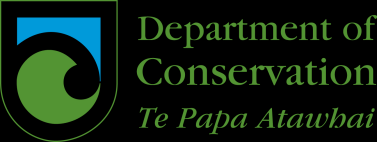
19-E-0368 / DOC 6001007
3 July 2019
Hannah Enderby
via fyi.org.nz
Dear Ms Enderby
Thank you for your Official Information Act request to the Department of
Conservation dated 5 June 2019, relating to the kea that were killed in Okarito in
2011
.
Before considering your request, we set out the following contextual information as it
is relevant to the approach we have taken in this instance.
Kea nesting improves after 1080 treatment
DOC scientists have monitored kea after 1080 operations for a number of years. One
of the observations to come from our monitoring is that using 1080 can result in
some individual kea being killed, but that this risk is offset by the improved nesting
success after predator control.
Overall, monitoring shows that when predators are controlled with well-timed aerial
1080 treatment and/or traps, about 70% of kea nests are successful, i.e. produce at
least one chick.
Without pest control, typically only around 40% of kea nests are successful. This is
mostly due to the birds being preyed on by stoats or possums, and in some areas,
feral cats
.
Without pest control the number of successful nests falls to just 10% in a stoat plague
after heavy (“mast”) beech or rimu forest seeding.
Our monitoring discloses that the use of 1080 is essential in ensuring that kea have
the opportunity to flourish where their numbers would otherwise decline due to
predation.
Research also supports the use of 1080 to protect kea
DOC scientists have published research
(https://newzealandecology.org/nzje/3341) in the NZ Journal of Ecology (June 2018) on the effects of aerial 1080 in protecting
nesting kea from predators.
This research was carried out from 2009-2012 on the South Island West Coast. It
measured the nesting success of kea and compared this before and after aerial 1080
treatment and with an area where there was no predator control.
The results showed that kea nests were nine times more likely to survive and
successfully produce chicks after aerial 1080 predator control.
Our scientists calculate that overall, the kea population is better off after 1080
treatment than without it.
An example of a predator control success story
DOC has monitored kea nesting success in Kahurangi National Park since 2009.
Between 2009 and 2014 only 2% of nests were successful in areas without predator
control.
DOC undertook aerial 1080 predator control in Kahurangi National Park in 2014 and
2016. In the 2015 and 2016 kea breeding seasons, on average 50% of monitored nests
produced young kea.
During those operations DOC tracked a total of 71 kea at four different sites (Mt
Arthur, Wangapeka, Anatoki and Oparara) and two birds were poisoned. The loss of
these birds is unfortunate but was offset by the much better nesting success of the kea
population in the park after predator control.
Eating and scavenging human food puts kea at greater risk of dying from
1080
Our scientists have analysed the risk that kea will eat toxic 1080 cereal baits.
Published research (https://newzealandecology.org/nzje/3351) shows that the kea
that live close to areas where they can scrounge food from people are at much higher
risk of being poisoned than kea in remote areas.
Kea in the remote backcountry, where most of our aerial 1080 predator control work
is done, are at low risk of being poisoned and any deaths are easily offset by greater
nesting success and more young birds in the population.
Feeding kea and allowing them to scavenge our food is not only bad for their health
but puts them at greater risk of dying in our predator control operations. From the
Department’s perspective it is important that the public and visitors to our country
properly understand the risk this issue poses to kea.
Your OIA request
We now consider your OIA request. For ease of reference, we have addressed each
issue you have raised separately below.
1) I note in an OIA response entitled "Symptoms of the Kea DOC has killed with
1080 poison" made on this FYI site by T Benseman, that you admit to killing
protected native Kea at a place called Okarito on the 4th of September 2011.
Please send me photos of these Kea and photos of the necropsy they went
[through] where you note "intensely green stained vomitus".
The information you have requested will soon be publicly available on the
Department’s website. Therefore, we are refusing this part of your request under
section 18(d) of the Official Information Act 1982.

We will get in touch with you as soon as this information has been published to let
you know how you can access it.
2) Please also tell me what contractor and air operator (their full legal names)
spread the 1080 poison and which DOC person (their full legal name) signed
off and approved the spreading of this poisoned food to the kea.
We are extending the 20 working day period to respond to this part of your request,
as allowed under section 15A(1) of the Official Information Act. We require an
additional 20 working days to respond to this part of your request. We will send you a
response no later than 31 July 2019, or earlier if possible.
The extension of time is necessary as the consultations required to make a decision
on the request mean that a proper response cannot reasonably be made within the
original time limit.
You have the right, under section 28(3) of the Official Information Act to make a
complaint to an Ombudsman about the contents of this letter.
Yours sincerely,
Amber Bill
Director Threats,
For Director-General

